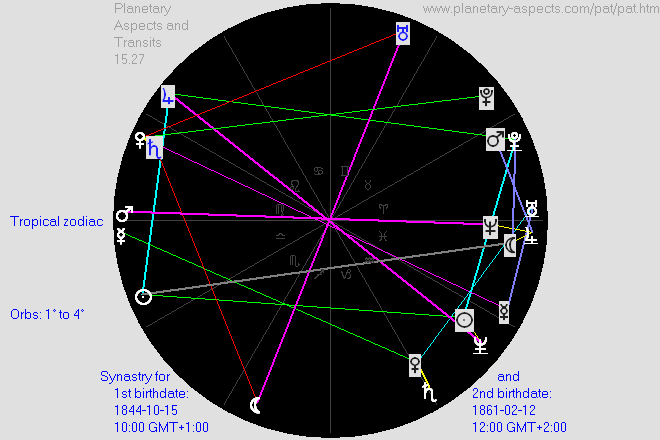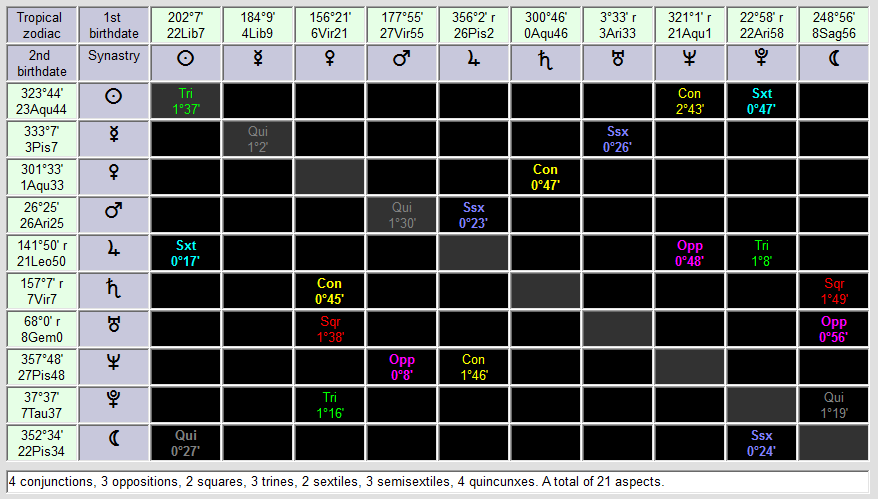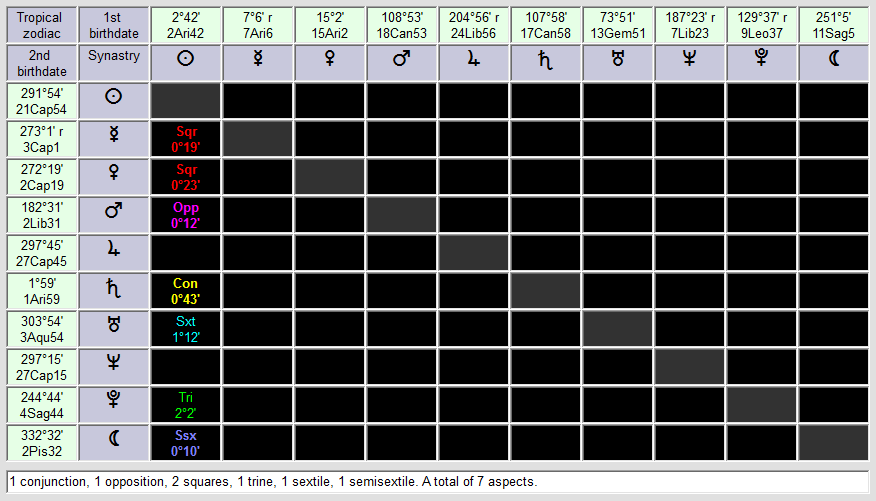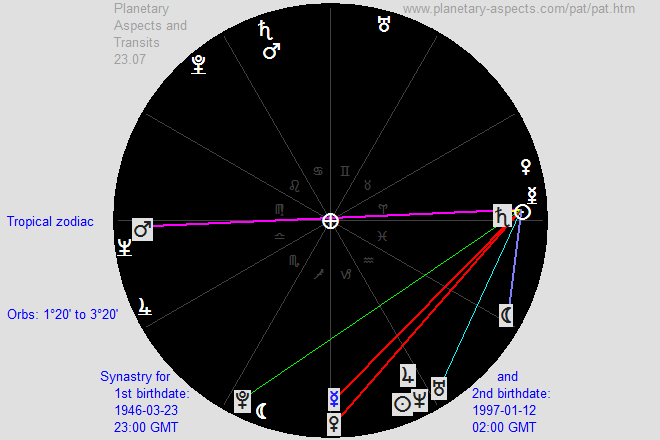|
 |
Both programs Planetary Aspects and Transits and Heliocentric Planetary Aspects and Transits can be used to calculate the synastry relation between the planets in the natal horoscopes of two people. The synastry relation consists of the set of aspects between the planets in one person's natal chart and the planets in the other person's. For example, consider the astrological relationship between Friedrich Nietzsche and his lover Lou Salomé. The details of their natal horoscopes, in both tabular and graphical form, are given here.
Here is the synastry relationship of the planets in the charts of Friedrich Nietzsche and Lou Salomé, in graphical form:

As noted at the earlier page:
Nietzsche's Venus forms four aspects with Salomé's planets, and with seven trines and sextiles and only one square (but that square is Nietzsche's Venus to her Uranus) this might seem an auspicious synastry. But on closer examination what leaps out here is the relations between Venus (the planet of love) and Saturn (the planet of restriction). His Venus is almost exactly (0°45') conjunct her Saturn, and her Venus is almost exactly conjunct (0°47') his Saturn. This does not suggest a successful amatory relationship.And here is the synastry relationship in tabular form:Nietzsche's natal Moon forms a square aspect (2°35') with his Venus, suggesting difficulties in his feelings toward women. Salomé's birth time is not known exactly, so the position of her natal Moon is also not known exactly, but in the synastry chart we find that Nietzsche's Moon and his Venus form an almost T-square with her Uranus.

Note that the aspects appear to be distributed more or less randomly over the rectangular grid. Rarely, however, there is a much more regular distribution. For example, the synastry relationship between someone born at 1946-03-23 at 23:00 GMT and someone born at 1997-01-12 at 02:00 GMT. In tabular form the synastry relationship is thus:

The synastry chart is:

Six of the 2nd person's nine planets, plus the Moon, have a nearly exact aspect to the 1st person's Sun. Perhaps this means that the 2nd person finds the 1st person to be fascinating (or vice‑versa).
| Planetary Aspects and Transits Software | Planetary Aspects and Transits Home Page |